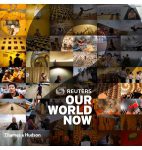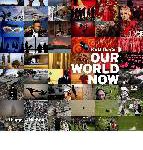The 10 photographs in the slideshow are Copyright 2009 Thomson Reuters and published by chinadialogue with the permission of Thomson Reuters.
Just over a year ago – on September 15, 2008 — the global financial services firm Lehman Brothers filed for bankruptcy protection in New York City. It was a collapse that reverberated around the world, with impacts both real and symbolic. The giant’s implosion – after 158 years of trading – was a signal event in reshaping the financial landscape of much of the planet.
The overall disaster had been brewing for years, a storm that gathered force within banking and investment institutions, regulatory agencies and government departments. Its strength was fed by mystery, manipulation, miscalculation, recklessness, greed, wishful thinking, lack of common sense and other factors. Amid legal proceedings in a Manhattan courtroom, a New York bankruptcy judge found that “Lehman Brothers became a victim, in effect the only true icon to fall in a tsunami that has befallen the credit markets”.
Tsunami. Earthquake. Altered landscape. Collapse. Implosion. Storm. Catastrophe. Maelstrom. Burst dam. Toxic assets. Crippled industry. Crushed hopes. The very language used to describe the meltdown of Lehman’s and the events it set in motion has been hard, physical, environmental. The prime minister of Iceland – a sovereign state brought to its knees by the global crisis — likened it to “an economic natural disaster”.
As with the demise of Lehman — the largest bankruptcy in US history — and its aftermath, the grim anniversary was marked by a wave of analysis and reflection about the worst financial crisis since the Great Depression.
Now, as signs of recovery begin to emerge, the Reuters news agency has launched a multimedia special, Times of Crisis, “charting 365 days of upheaval to show how lives everywhere have changed as a divergent world embarks on a new era of historic uncertainty”. Produced in association with MediaStorm, the project spans 12 months of global crisis: a year marked by battered stock markets, eroded currencies, eye-watering government bailouts, mergers of once-mighty firms, frozen projects, vaporised jobs and businesses, homes lost, lives ruined and confidence destroyed.
As Reuters’ vice president for pictures, Ayperi Karabuda Ecer, put it: “The crisis has been amongst the most significant events of our time – touching lives everywhere. We have drawn upon every aspect of Reuters reporting, combining facts with emotion to tell the bigger story.”
With the world struggling to recover, the International Energy Agency (IEA) said last week that global emissions of carbon dioxide (CO2) — the most common of the greenhouse gases blamed for climate change — will drop by about 2.6% for 2009. The sharpest rate of decline in 40 years, it is attributed to tumbling factory output.
The IEA forecast is an early excerpt from the agency’s annual World Energy Outlook, to be published on November 10. More details are expected in Bangkok on October 6, on the sidelines of United Nations talks now under way there.
Fatih Birol, the IEA’s chief economist, told Reuters that the world must use the CO2 decline to drive a global fight against climate change and not permit emissions to rise again when times get better economically. Before 2009, Birol said, “the biggest fall was in 1981, at 1.3%, after oil-price shocks and economic troubles”. But, as after previous recessions, emissions were allowed to climb again.
While reducing fossil-fuel burning and plant building, Birol added, the current financial crisis also has impaired investment in new energy infrastructure that could help to ease a transition to low-carbon alternatives. “This fall in emissions … will only have meaning with agreement in Copenhagen which provides a low-carbon signal to investors”, he said.
Indeed, while 2009 emissions are falling in the United States and Europe, they are rising (along with industrial output) in large developing countries – particularly China, the world’s biggest carbon emitter.
As the selection of Reuters photos presented here illustrates, China – like most countries in these times of crisis — struggles with energy, environmental and economic issues: the role of coal, electricity production, industrial output, pollution, waste management, drought, water and sanitation, consumption, food and farming.
Maryann Bird is associate editor of chinadialogue
NEXT WEEK: Some Reuters photos from around the world



